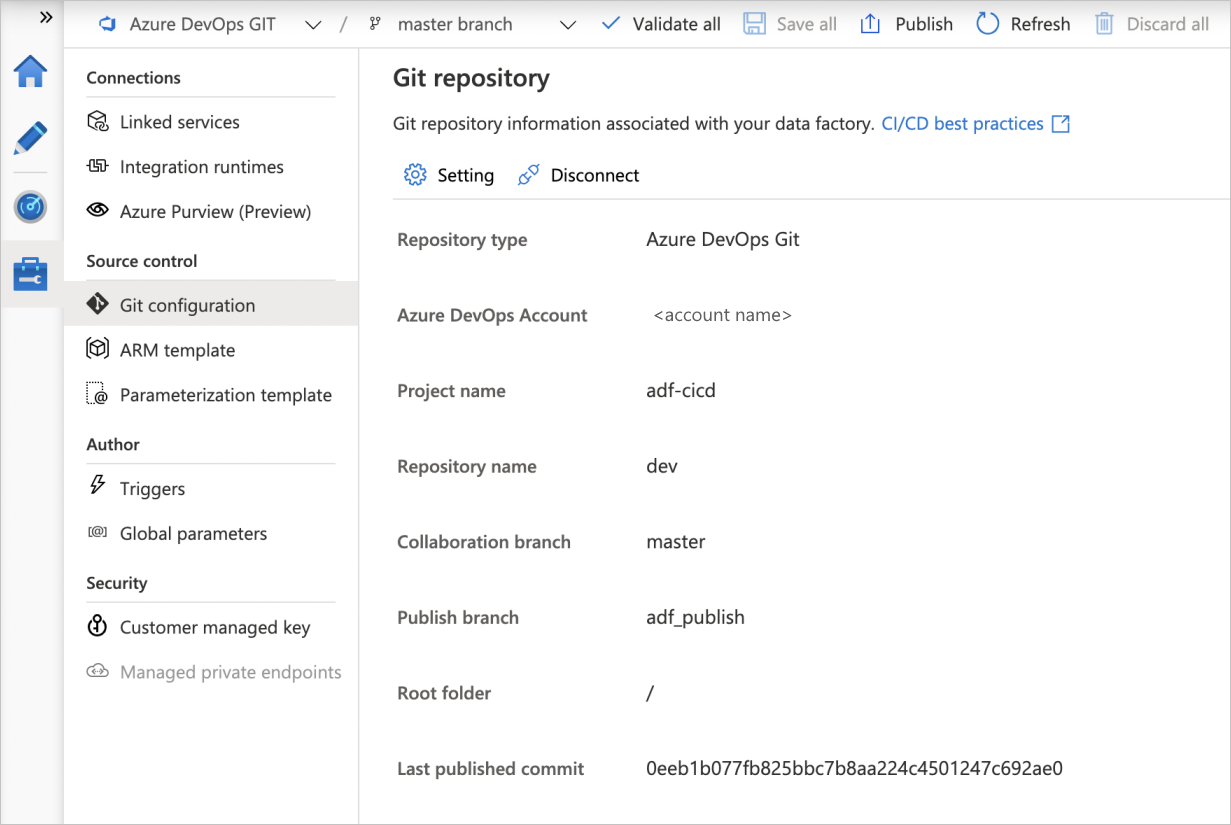Management hub in Azure Data Factory
APPLIES TO:  Azure Data Factory
Azure Data Factory  Azure Synapse Analytics
Azure Synapse Analytics
Tip
Try out Data Factory in Microsoft Fabric, an all-in-one analytics solution for enterprises. Microsoft Fabric covers everything from data movement to data science, real-time analytics, business intelligence, and reporting. Learn how to start a new trial for free!
The management hub, accessed by the Manage tab in the Azure Data Factory UX, is a portal that hosts global management actions for your data factory. Here, you can manage your connections to data stores and external computes, source control configuration, and trigger settings.
Manage connections
Linked services
Linked services define the connection information for Azure Data Factory to connect to external data stores and compute environments. For more information, see linked services concepts. Linked service creation, editing, and deletion is done in the management hub.

Integration runtimes
An integration runtime is a compute infrastructure used by Azure Data Factory to provide data integration capabilities across different network environments. For more information, learn about integration runtime concepts. In the management hub, you can create, delete, and monitor your integration runtimes.

Manage source control
Git configuration
You can view/ edit all the Git-related information under the Git configuration settings in the management hub.
Last published commit information is listed as well and can help to understand the precise commit, which was last published/ deployed across environments. It can also be helpful when doing Hot Fixes in production.
For more information, learn about source control in Azure Data Factory.

Parameterization template
To override the generated Resource Manager template parameters when publishing from the collaboration branch, you can generate or edit a custom parameters file. For more information, learn how to use custom parameters in the Resource Manager template. The parameterization template is only available when working in a git repository. If the arm-template-parameters-definition.json file doesn't exist in the working branch, editing the default template will generate it.

Manage authoring
Triggers
Triggers determine when a pipeline run should be kicked off. Currently triggers can be on a wall clock schedule, operate on a periodic interval, or depend on an event. For more information, learn about trigger execution. In the management hub, you can create, edit, delete, or view the current state of a trigger.

Global parameters
Global parameters are constants across a data factory that can be consumed by a pipeline in any expression. For more information, learn about global parameters.

Related content
Learn how to configure a git repository to your ADF
Feedback
Coming soon: Throughout 2024 we will be phasing out GitHub Issues as the feedback mechanism for content and replacing it with a new feedback system. For more information see: https://aka.ms/ContentUserFeedback.
Submit and view feedback for